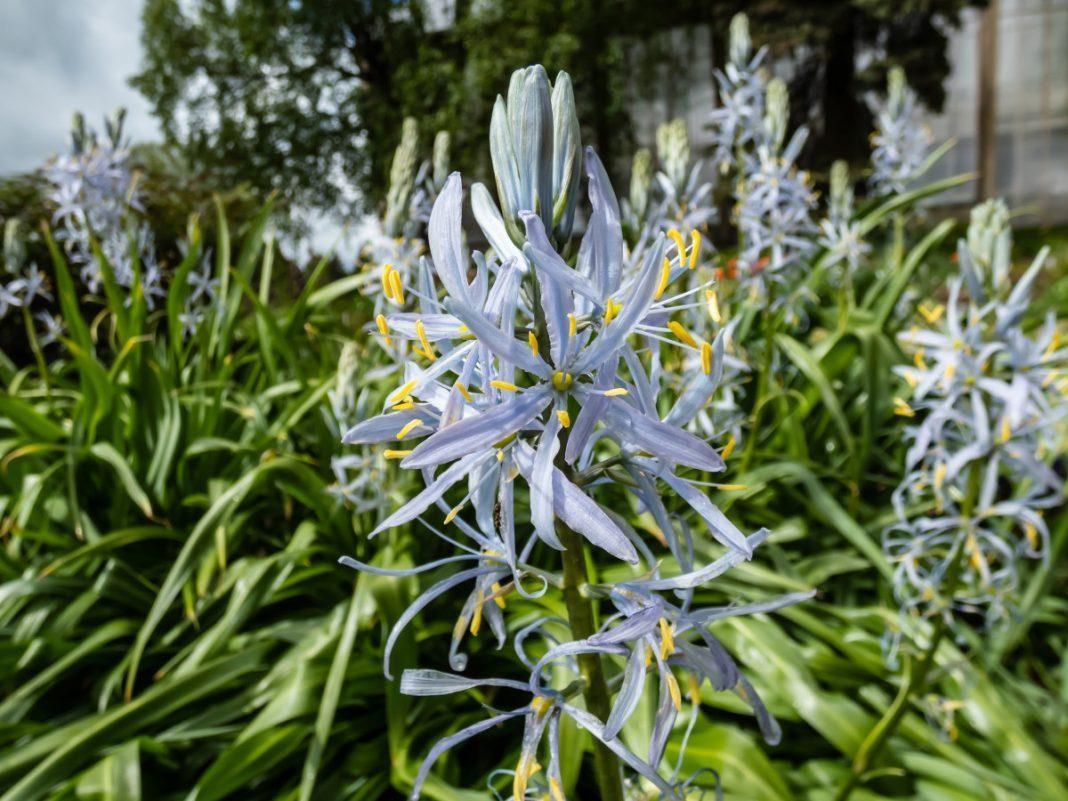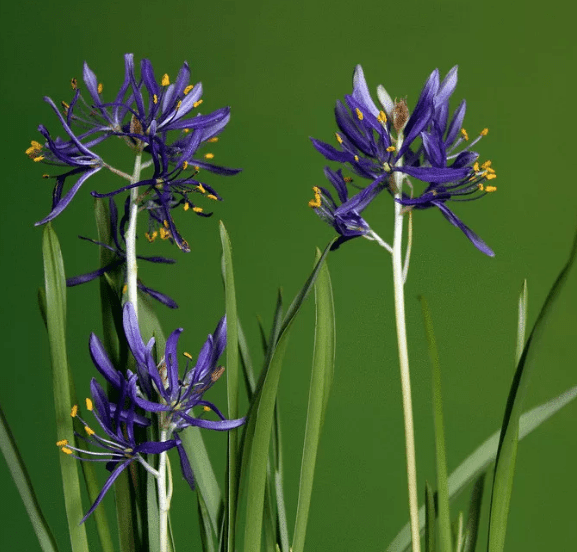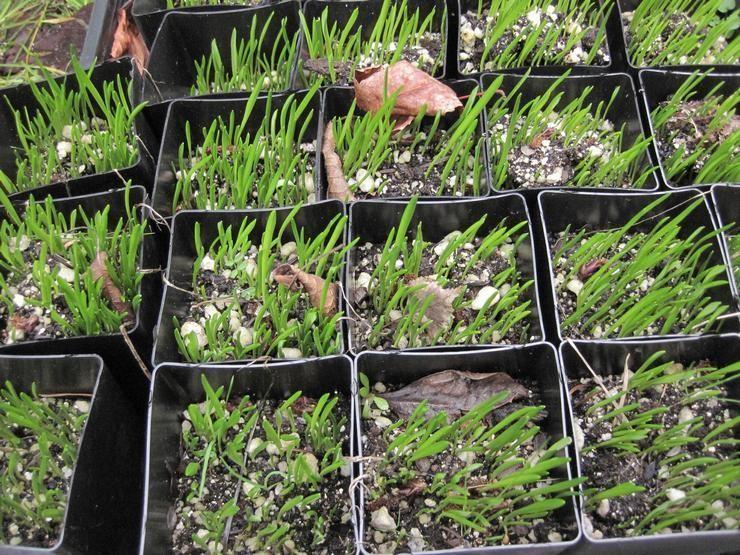Content
Camassia is a herbaceous bulbous plant that lives in one place for several years. It is easy to care for and resistant to diseases and pests. Judging by the photo and description of camassia, lush flowering is usually achieved by those who follow all the subtleties of cultivation.
Description of Camassia with photo
In the wild, the camassia flower is found in North America and western Canada. Grows on steppe plains, mountain meadows and open slopes. Decorates the banks of rivers and streams, standing out effectively against the backdrop of lush greenery.
The botanical description of camassia (lat. Camassia) classifies it as a plant from the Asparagus family. The photo clearly demonstrates the decorative nature of the spike-shaped inflorescence formed on the upper part of the stem.

The inflorescence consists of many star-shaped flowers of a white, blue, violet or light blue palette
Camassia blooms in late spring or early summer. After budding, it forms a fruit-box with numerous seeds.
Russian gardeners are still little familiar with this exotic plant.But meanwhile, camassia is not only beautiful, but also well adapted for the middle zone. It is not difficult to grow it in your summer cottage. In addition, this flower is a perennial, and therefore does not require tedious annual replanting to a new place.

The word "camassie" comes from "camas" or "edible", which is what the Indians of North America called this flower.
Types and varieties of camassia
According to confirmed data, there are at least six species of camassia flower in the genus. All of them grow well in open ground and bloom profusely every new season. Some of them are especially popular among Russian gardeners.
Kamassia Leuchtlina
The camassia Leichtlinii flower species was first described in 1837. The flower received this name after the German breeder M. Leuchtlin.
The plant forms a long stem up to 1 m. At its end there is an erect racemose inflorescence. It consists of flowers with a diameter of 5-8 cm. The flower palette is varied: white, purple, dark blue, lilac, cream.

Camassia blooms at the end of May or at the beginning of June; the lower buds begin to open first, followed by all the others.
This flower is considered long lasting. It can remain in one place without transplantation or division for up to five years. Popular varieties: Alba, Coerulea, Semiplena, Soft Pink.
Camassia Cusica
This species was named in honor of its creator, William Conklin Cusick, a talented self-taught American botanist. A characteristic feature of Camassia Kuzika is the unpleasant smell of the bulbs.
The plant produces lush clumps with many linear bluish-green leaves and sky-blue flowers. The flowering period occurs at the end of spring or at the beginning of summer and lasts 7-10 days.

The Camassia Kuzika flower species is distinguished by its not very large flowers.
Camassia quamash or edible
In culture, camassia quamash is grown as a garden and ornamental flower. However, the bulbs of this species are indeed edible. They have high nutritional value due to their sugar and starch content.
This species represents a flower with a height of 20 to 80 cm, depending on the varietal characteristics. The leaves are up to 60 cm long and up to 2 cm wide. They are straight or drooping, with a smooth and shiny surface.
Camassia quamash comes in blue, blue-violet and white. The inflorescences grow up to 40 cm in length. In the middle zone, the buds open in late spring or early summer.

The flowering period of Camassia quamash is short - about 10 days.
Camassia Fraser or Scilla
This is a perennial plant, the height of which does not exceed 70 cm. The bulbs are elongated-ovoid in shape, with a diameter of 3-4 cm. In the southern regions, flowering occurs in late April or early May, and in more northern regions - in May-June.

During the flowering period, the inflorescences are strewn with flowers of a purple, white or blue palette
Camassia Howela
This type of flower has been known to gardeners since 1892. Distributed in the southern part of the USA. Habitat: wet meadows and banks of water bodies.
Camassia Howela forms fairly large racemose inflorescences. The number of flowers in them can vary from 35 to 90 pieces.They have a rich blue-violet color and contrast brightly with the green leaves.

A distinctive feature of the flowers is the long yellow anthers, which become visible when the buds fully open.
Planting camassia
The bright beauty Camassia is a completely unpretentious flower that can take root almost anywhere in a summer cottage. The abundance of sun will have a positive effect on its development. However, a plant planted in a shaded area forms taller peduncles and blooms longer.
For growing a flower, loose, fertile and drained soil that allows oxygen and moisture to reach the roots is suitable. This flower should not be planted in lowlands where moist, cold air accumulates, which can ultimately lead to rotting of the root system.

Bulbs are planted in the fall, around September-October.
The main thing is to have time to root before the onset of the first cold weather, otherwise the bulbs may freeze. At the same time, some varieties tolerate frosts well down to -20 ° C and below.
Step-by-step instruction:
- Clear the land of weeds and dig thoroughly.
- Form holes 10-15 cm deep. Loosen the bottom, pour drainage from gravel, pebbles or broken bricks.
- Sprinkle with a layer of soil and place the onions on top. Cover with soil and compact lightly with your hands.
To protect the bulbs from freezing, you need to pour a layer of mulching material on top. This could be rotted sawdust, straw or fallen leaves.
Features of caring for camassia
To achieve lush flowering, camassia is fed with complex mineral fertilizers during the period of bud formation and formation. To do this, the capsules are scattered over the surface of the moistened soil and loosened. Liquid fertilizers are also used.According to the instructions, they are diluted in water and watered over the flower.
In early spring, rotted horse or cow manure is added to the soil. It contains many necessary substances for the proper development and good growth of the flower.
To control weeds, the soil in the flowerbed is regularly loosened. In addition, this procedure allows the bulbs to breathe. After loosening the soil, cover it with a layer of mulch. Dry grass or sawdust helps limit weed growth, retain soil moisture, and protect bulbs from winter frosts.
Reproduction methods
Camassia propagation is carried out in two ways: sowing and dividing the bush. The process of seed germination lasts about five months, so sowing begins in September.
To do this, take a plastic container and fill it with nutrient soil. Make several furrows and sow the seeds, planting them to a depth of 2 cm.
Stratification is an important condition for seed germination. Therefore, the container is placed in the refrigerator throughout the winter.
In early spring, the container with the seeds is moved to a warm windowsill. Light and warmth promote rapid emergence of seedlings.

Young plants must be thinned out, maintaining a distance of 30 cm between them; in the spring they are planted in open ground
Camassia is propagated by dividing the bush in mid-summer. To do this, choose a healthy and mature plant. The bush is divided into two parts or the bulbs are carefully separated, being careful not to damage the roots, and transplanted to a new location.
Diseases and pests
By nature, camassia is endowed with strong immunity. It rarely gets sick and is practically not damaged by pests.However, errors in care, namely constant waterlogging of the soil and lack of loosening, lead to the appearance of fungal diseases. As a result, the bulbs rot and the flower dies.
To prevent rot from forming, it is important to care for it properly. Before planting the bulbs in open ground, you need to soak them for 10-15 minutes in a solution of potassium manganese.
Among the pests, the plant is bothered by the onion root mite. Signs of its vital activity are deformed leaves covered with a white coating.

It is useless to treat the affected plant, so it is dug up and destroyed.
Application in landscape design
Camassia is combined with geranium, delphinium, iris, daylily and verbena. The flower looks organic next to conifers and ornamental shrubs. The flower is also good for cutting. Florists love to use it to create delicate flower arrangements.

In group plantings, camassias form an original landscape ensemble
Conclusion
Photos and descriptions of Camassia will help you choose a variety for your garden. The flower is content with minimal care, but at the same time pleases with bright and unique flowering. In addition, it is a honey plant and attracts beautiful butterflies to the garden.
Reviews about growing camassia











